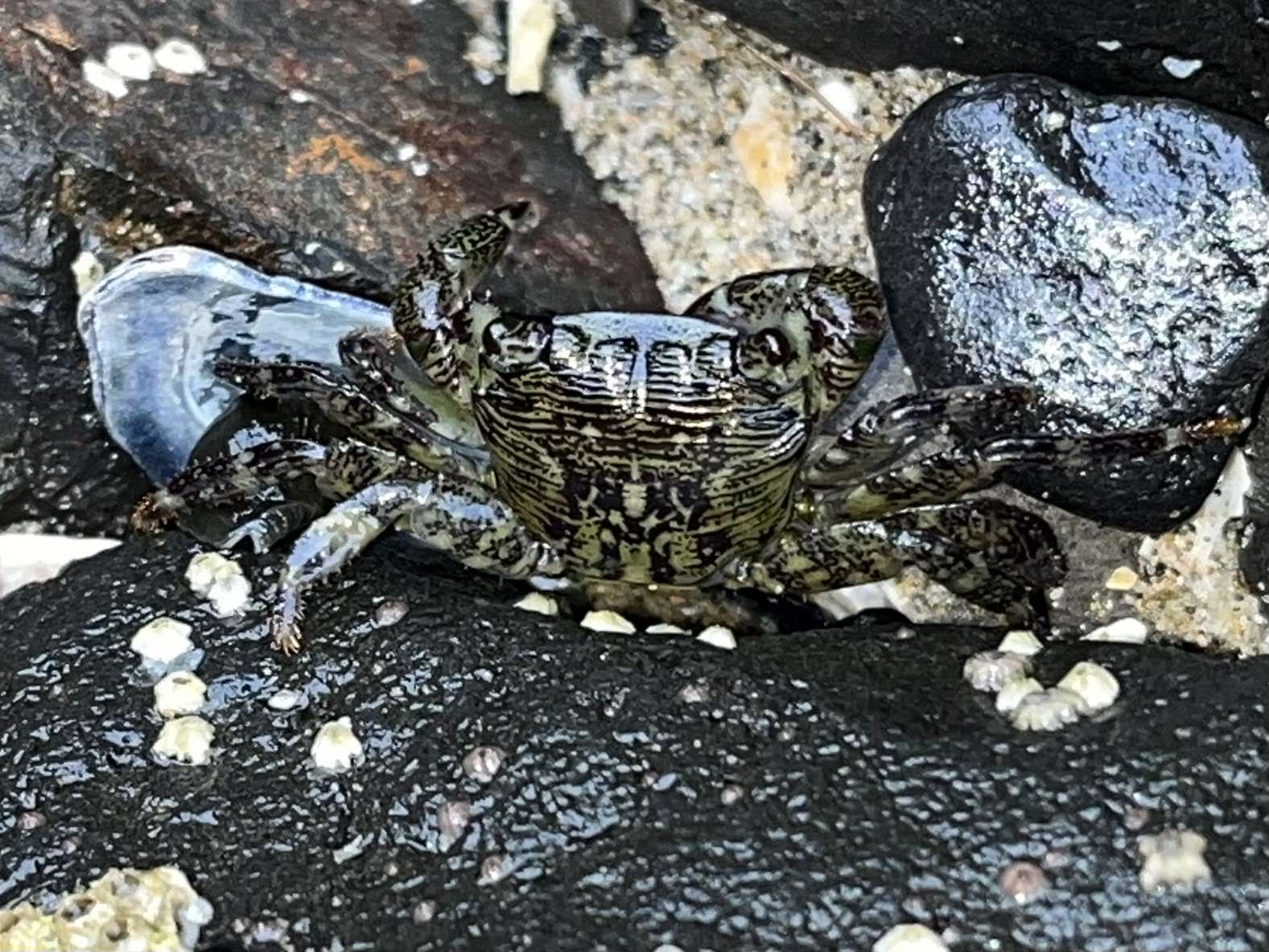Striped Shore Crab (Pachygrapsus crassipes)
(photo credit: Lauren Rice)
Other Names: Lined shore crabs
Description: Striped shore crabs have dark reddish-purple legs and claws and dark backs striped with thin bright-green horizontal lines. Male striped shore crabs can reach almost 5 centimeters in width and females reach about 4 centimeters in width, making these a rather small variety of crab.
Habitat: Striped shore crabs are a common intertidal species of crab found along the Pacific coast from Oregon down to Baja California, Mexico. On the other side of the Pacific Ocean, striped shore crabs are found along the Japanese and Korean coastlines. At Haystack Rock, striped shore crabs can be found hiding in crevices, like between rocks or mussel beds.
Diet: They use their tiny but mighty pincers to tear up pieces of green algae for food, but sometimes they’ll also eat creatures like limpets and even other small crabs.
Tide Pool Tidbits:
Striped shore crabs are egg-making machines: a single female can produce up to 50,000 eggs! After the eggs are fertilized, she will carry them underneath her abdomen, similar to other crab species.
Like other crustaceans, striped shore crabs eventually have to molt their shells. This is similar to when humans grow too tall for old clothes to fit; when a crab grows bigger, it will then shed (or molt) its outer shell. When crabs molt, it takes a while for them to develop a hard shell again, which leaves their soft body exposed. Occasionally, striped shore crabs will cannibalize fellow members of their species during this vulnerable time.
References: iNaturalist, Morro Bay NEP


